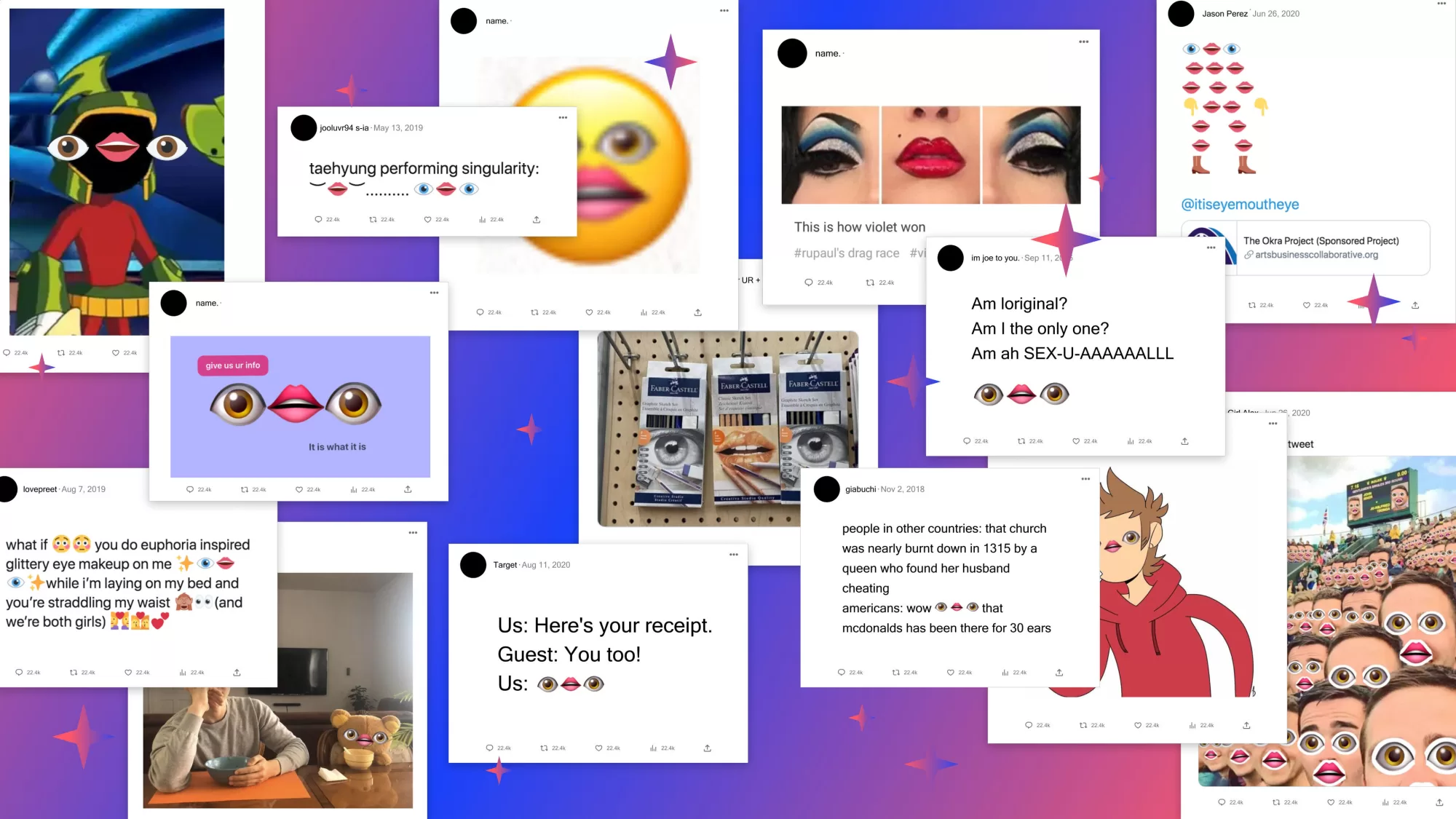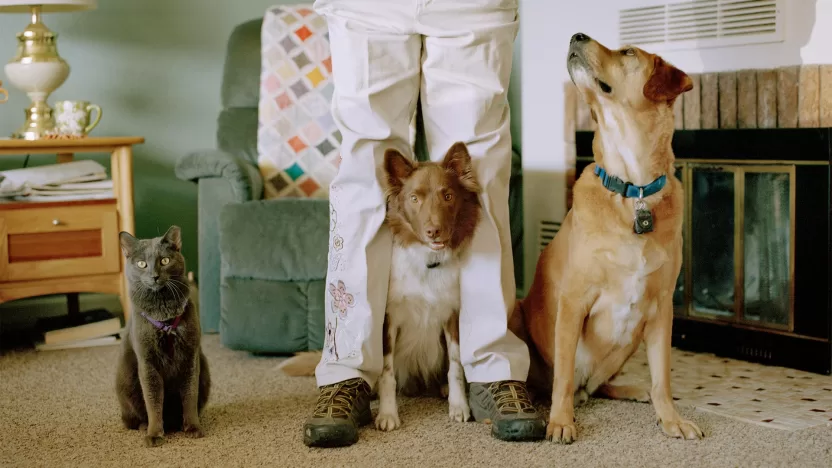Digital Lingos
A dive into social network languages and subcultures
by Luca Desogus
One week ago, I found myself tackling some long overdue house cleaning tasks — you know, those chores we continually defer but inevitably must confront. It was during this unexpected domestic endeavor that fate intervened with a surprising twist. As I sifted through the accumulated dust on a neglected shelf, I stumbled upon a relic of the past: an old book authored by the Italian pop duo Paola & Chiara. While flipping through its pages, filled with stretched fonts and cut out pictures in quintessential 2000s style, I got captivated by the final chapter’s title: A Future in Dynamic Web Like the Internet. Inside, the singers were inviting fans to communicate with them on new and revolutionary platforms: emails and websites.
It’s rather amusing that in 2023, we can look back and find ourselves grinning at something that wasn’t all that apparent back in the day. As I delved into those pages, it was like taking a whimsical journey through the early days of the web, almost like a digital time capsule. They talked about forums, charmingly archaic landline-connected chats, and little message boxes for sending out support. These terms are now as familiar as our morning coffee, but here’s the kicker — they aren’t ancient history; they’re just a mere two decades old.
A true Y2K apocalypse occurred in the last twenty years: the rise of social media shortened the distance between people but also catalyzed an entirely new way of communicating with one another.
A more direct, spontaneous, and immediate form of communication now blends various languages, from verbal to visual, to ensure the message gets across quickly to as many friends as possible. Think of it as a lively gathering at your favorite local bar, where you discuss a myriad of topics. The twist, however, is that this “social media bar” boasts millions of potential friends.
The risk is that this expansive landscape can often resemble a whirlwind, resulting in communication that feels fragmented and disarrayed. It’s akin to a bustling marketplace where voices get lost in the cacophony. Yet, this is where the magic unfolds: niches and social groups come into play, bonded by shared interests and distinctive approaches.
Every self-respecting circle starts to develop its own specific language, a jargon that enhances the sense of belonging among its members. Despite their spontaneity, these jargons follow an implicit code: the Stan Twitter community (a term composed of “stalker” and “fan”) adhered to mostly by Gen Z represents a clear example. Members of this community declare themselves obsessed with a singer or artist and use deliberately colorful language to gain attention online. This web subculture, over the 2010s, has completely altered the literal meaning of commonly used words, such as dead (used both to mean “dying of laughter” and to say that they would figuratively “kill for their idol”), mother (to refer to a female artist who gives birth to crazy concepts), slay (to indicate when someone “totally crushes it” with their skill).
As linguist Rob Drummond explains in an article for iD, the increasingly accessible web platforms have made it necessary for everyone to stand out in the crowd. And what better way than leveraging an extreme emotion like death? Stans know that celebrities can read what they write, as can their followers, so it becomes a competition to find the most original and exaggerated term to get noticed by their idol. If in the early 2000s, Paola & Chiara’s inbox received formal emails, today it would be flooded with comments that are much more exaggerated. Just take a look under the photos of the two singers on Instagram to see that they are inundated with messages like “queen, feed us,” “you want me dead,” etc.
However, it should be noted that before the “witty comments” phase, Stan language is always preceded by memes and reactions to express feelings of amazement. Just like in the offline life, when you’re excited, you can’t say something sensible. Similarly, online, people try to replicate this mood by emitting a series of random characters — and sometimes in all caps — to convey excitement and screams of euphoria. Once the initial phase subsides, Stan Twitter moves on to the one of exaggerated and ironic comments, which, as activist Luna Malbroux demonstrates, draws heavily from the slang of the LGBTQIA+ community and African American Vernacular English (AAVE).
While it began as insider language typical of social media, Stan has now taken a type of language previously confined to a subculture and given it to a much broader audience, making it a true meme.
This way of expressing oneself has, in time, reached new heights. It broadened its impact and eventually became a hallmark of Generation Z when it landed on platforms like TikTok and Instagram to accompany captions for short, funny videos. In some cases, comments have been so exaggerated and vulgar that users have devised a way to bypass the platform’s content censorship. This is the phenomenon known as “algospeak,” where words that clash with the platform’s guidelines are interspersed with letters and numbers so that the algorithm cannot correctly interpret the word. On TikTok, given its strict guidelines, the Stan community’s lexicon becomes “d3ad,” “sl4y,” etc.
Social medias have definitely shattered several barriers among people. However, some of the distance is returning in a new form. On one hand, we have a language full of nuances that serves as an anchor where younger populations gather to support their interests and enhance their sense of belonging among peers. On the other hand, this type of communication has contributed to widening the generational gap in speech patterns towards individuals who may pertain to a different age group. An article in The Washington Post highlighted how the ironic tone and ungrammatical communication of Stan culture has had repercussions in offline life, especially in the workplace. Miscommunication is observed not only in word choices but also in the use of punctuation and emojis. The article notes how the literal use of emojis has lost meaning over time for the Generation Z. A typical example is the dissonant use of the Thumbs-Up emoji (👍), which boomers perceive as “okay, fine,” while millennials and zoomers may interpret it as a passive-aggressive way of accepting a situation they are uncomfortable with. At the same time, the combined use of emojis and exaggerated punctuation can convey implicit messages, as in the case of the Eye Lips Eye Emoji (👁👄👁), which, when used excessively with ellipses, communicates an ironic bewilderment, asking, “What’s happening?”

Another aspect that Generation Z assumes is the tendency to avoid long blocks of text in a single message, as it may seem overly formal and cumbersome to read. Social platforms like Twitter, whose goal is to encourage real-time communication with limited characters (or at least it was until 2022), as well as TikTok with video responses to comments under posts, have generated new writing styles where punctuation and capitalization can be skipped. The intent is to emulate spontaneous thinking, where grammar and syntax aren’t given much attention.
Andrew High, an associate professor at Penn State specializing in interpersonal communication, explains that for zoomers, social communication has practically evolved in parallel with offline communication since they were born, whereas boomers have approached email communication as an extension of letter writing, where information needed to be condensed into a single message.
However, as linguist Benjamin Lee Whorf wondered in his essay “Language, Mind, and Reality”:
“Do languages shape their speakers’ view of reality differently from language to language? Can a language change the understanding of the most basic concepts of its speakers, such as the passage of time, the position of objects, the dynamics of events?”
To address these potential misunderstandings, The Washington Post suggests adopting a code switch of one’s jargon, stepping out of one’s communication bubble, and approaching languages that we wouldn’t normally use.
And for those who accuse social media language of impoverishing grammar and vocabulary, it’s important to remember that language is not a static element over time; it changes depending on how people who use it decide to apply it. Digital lingos have shown that for every word that falls out of use, there can potentially be a thousand others that resurface with memes and new expressions. As we scroll through the next tweet or TikTok, waiting to die of laughter, all we can do is discover how this new era of language will evolve……👁👄👁


